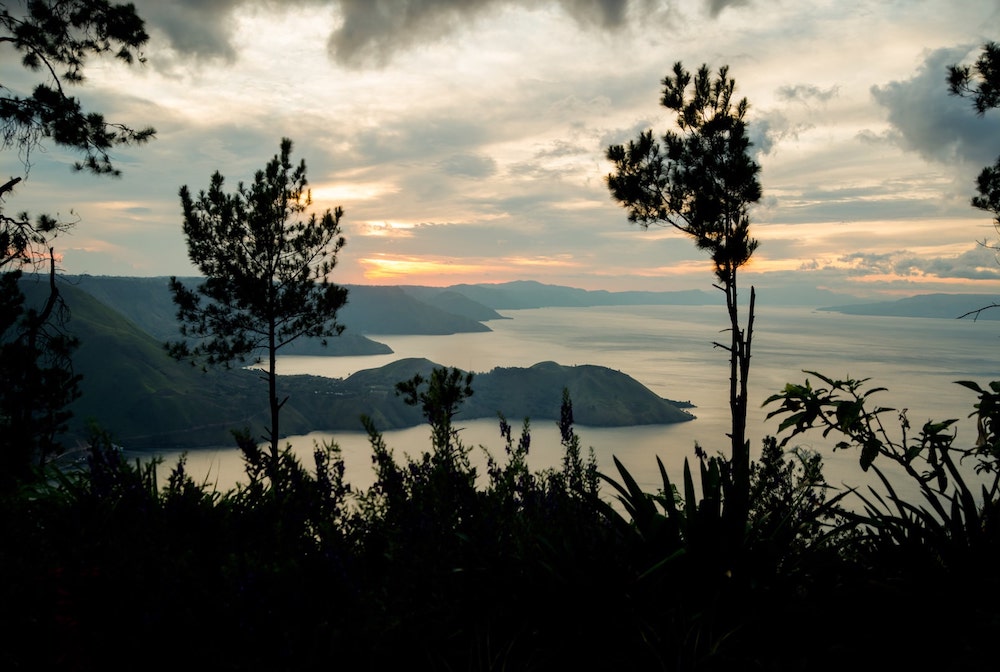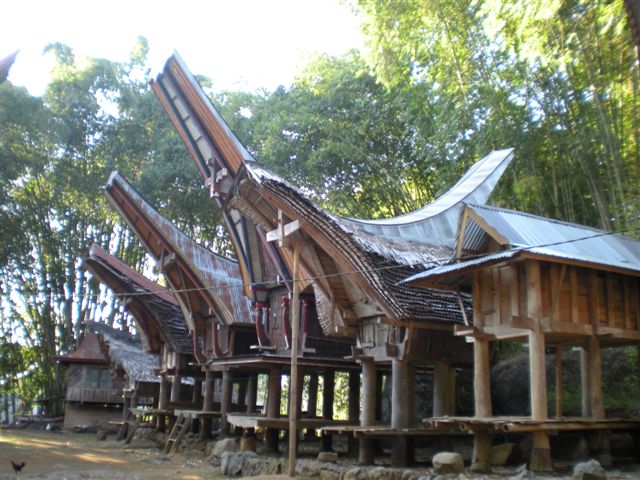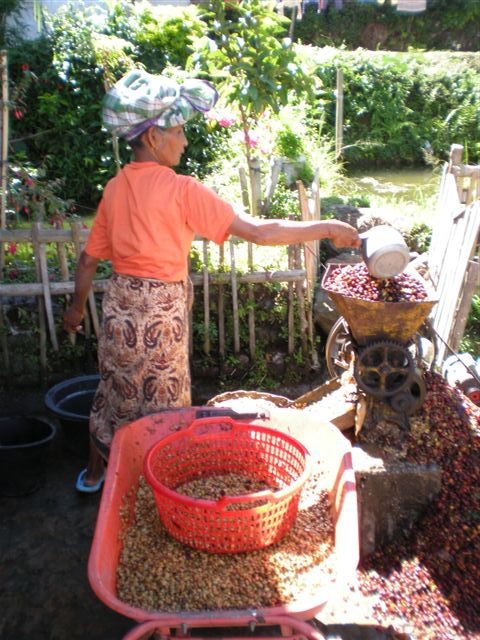Indonesia is the fourth most-populous country in the world and the third largest democracy. It’s home to hundreds of native ethnic groups and languages, but its national moto says it all: “Bhinneka Tunggal Ika (“Many, Yet One”). It’s comprised of more than 13,000 islands, among the largest of which are Java, Sumatra and Sulawesi. And because the harvest times on them vary, fresh green coffee from Indonesia arrives nearly every month.
More than 90 percent of Indonesia’s coffee comes from smallholders, who farm 1 to 2 hectares (2.2–4.4 acres). While the majority of the coffee is Robusta — a result of leaf rust severely wiping out Arabica crops in 1876 — current prices are encouraging a shift. For the last 10 years, farmers in producing areas including Java, Bali and Flores have been replanting Arabica.
—
Indonesia’s Primary Coffee Islands
Sumatra
This island’s best-known coffee regions are at its northwest end; respectively: Aceh; North Sumatra, which includes Lake Toba and Lintong; West Sumatra; and Jambi. Mount Kerinci, a volcano, sits on the border of the latter two. Harvest time on Sumatra runs from September through December.
Java
Half the population of Indonesia lives on Java, which is also home to the country’s four largest farms. Most coffee on Java is grown on the eastern end, around the Ijen volcano, and harvested between July and September. More recently, Arabica has been planted in West and Central Java, and production is increasing year over year. Coffee from the mountainous West Java is known as West Java Preanger Arabica. Preanger comes from a Sudanese phrase meaning “home of the gods.”
Sulawesi
Sulawesi, formerly known as Celebes, has four long peninsulas that extend out from its mountainous center. Most Arabica is grown around Tana Toraja, home of the Toraja people (fabled to be the descendants of divine beings who came down to this incredible land on a stairway from heaven). Their communities are instantly recognizable by their distinctive peak-roof houses (tongkonan) and wood carvings. Harvest time runs May through November.
—
Indonesia Glossary
Giling Basah
This processing method is very distinctive and unique to Indonesia. It combines elements of washed and natural processes and involves hulling the parchment off the bean at a roughly 50 percent moisture level, versus the 10 to 12 percent that’s common elsewhere. The resulting profile is a very full body, a light acidity and a concentrated flavor palette that’s herbal, spicy, chocolatey and pleasantly earthy.
Hand Picked
InterAmerican buys Grade 1 (G1 on our offering list) coffees that are Double Picked (DP) or Triple Picked (TP), referring to the number of times the coffee was picked through by hand, to remove any defects. This extra quality-control measure results in a very consistent cup.
Mandheling and Batak
Our Mandheling is a purposeful blend of green coffees from North Sumatra, including Lintong Arabica and Gayo Arabica. The word is derived from Mandailing, the name of a traditional ethnic group, though it’s often used to suggest an area. The same is true of Batak, which is a cultural distinction for a people closely associated with the Mandailing and not a true land area.
—
Coffee Offerings Overview
Here’s a quick breakdown of the Indonesia coffees we have in stock or afloat. For more details, you can head to our offering list and select Indonesia or click on the coffee bios below.
1
Sumatra Mandheling Fairtrade Organic
Giling basah; Batak areas of Aceh and West-Central Sumatra.
Chocolate, cranberry, spice, sweet tobacco; medium body, nice, winey acidity.
2
Sumatra Mandheling Triple-Picked G1
Giling basah; Batak areas of Aceh and West-Central Sumatra.
Bright citrus acidity, floral, earthy, molasses.
3
Sumatra Gayo Triple-Picked G1 Organic
Giling basah; Gayo Highland, Aceh
Cranberry, citrus, black tea, sweet and earthy.
4
Sumatra Lintong Triple-Picked G1
Giling basah; Lake Toba region, North Sumatra
Chocolate, clean earth notes, savory; tangy acidity.
5
Sumatra Kerinci Wet Hulled G1 Premium
Giling basah; Mt. Kerinci
Dark chocolate, citrus, cedar, cranberry; smooth body.
6
Sumatra Kerinci Honey
Honey process; Mt. Kerinci
Pineapple, rose, chocolate, black pepper; complex acidity, syrupy body.
7
Sulawesi Toraja Sapan Minanga G1
Giling basah; Tana Toraja
Strawberry, dark chocolate, earth, walnuts; citrus acidity, creamy body.
8
Java Kayumas Estate AWP1
Washed; Ijen Plateau, East Java
Chocolate, cherry, nougat.
9
Java Blawan Estate AWP1
Washed; Ijen Plateau, East Java
Dark chocolate, cinnamon, sage, cedar; creamy body.
10
Java Jampit AWP1
Washed; Ijen Plateau, East Java
Baker’s chocolate, nutty, tobacco, citrus.
—
Have a question? Want something specific? We love to talk coffee, so please get in touch — traders.iacus@nkg.coffee. (Caption: The top photo is a farm on Sumatra.) •


